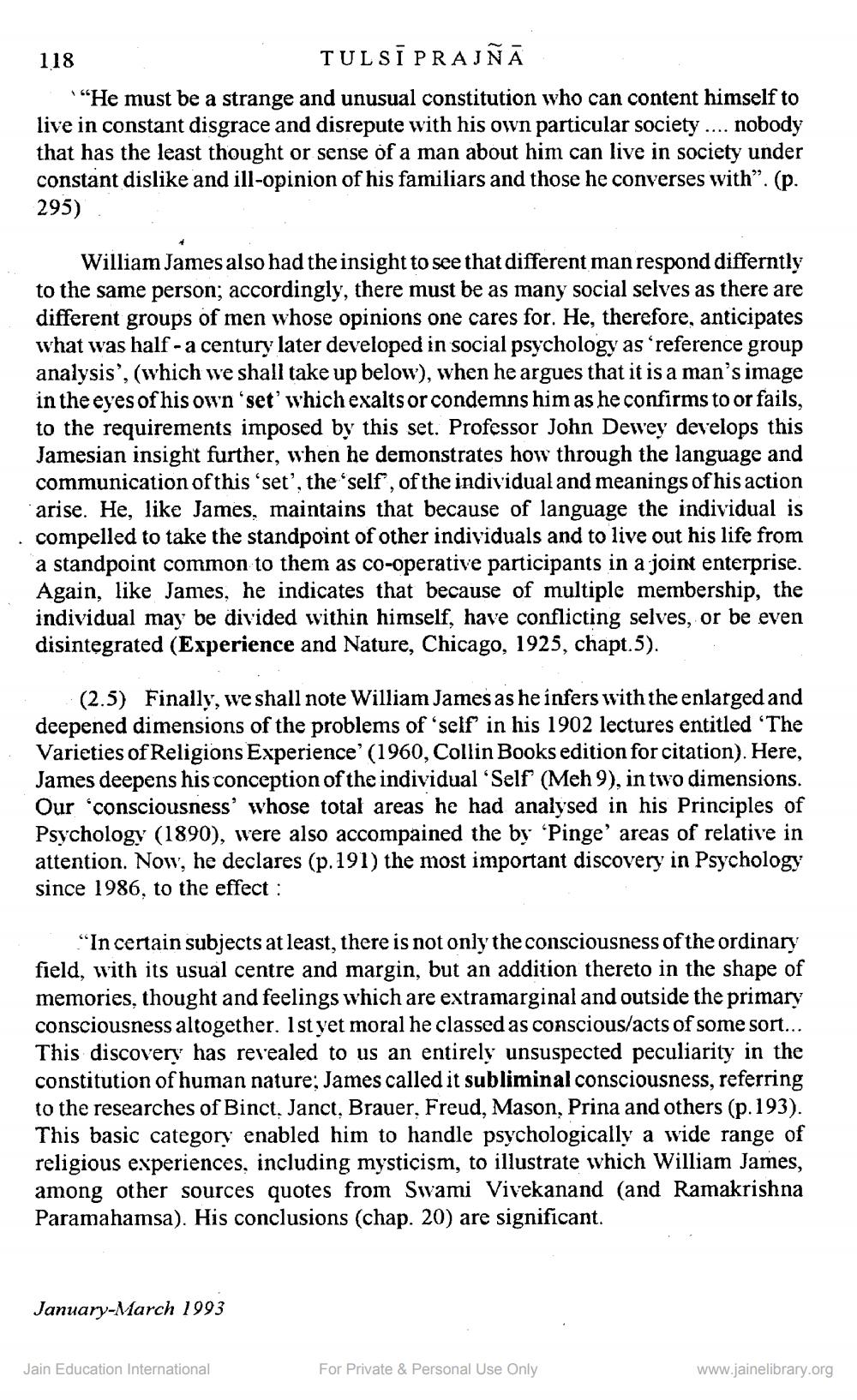________________
118
TU L SĨ P RA J [A
"He must be a strange and unusual constitution who can content himself to live in constant disgrace and disrepute with his own particular society .... nobody that has the least thought or sense of a man about him can live in society under constant dislike and ill-opinion of his familiars and those he converses with”. (p. 295)
William James also had the insight to see that different man respond differntly to the same person; accordingly, there must be as many social selves as there are different groups of men whose opinions one cares for. He, therefore, anticipates what was half - a century later developed in social psychology as reference group analysis', (which we shall take up below), when he argues that it is a man's image in the eyes of his own 'set' which exalts or condemns him as he confirms to or fails, to the requirements imposed by this set. Professor John Dewey develops this Jamesian insight further, when he demonstrates how through the language and communication ofthis 'set', the 'self", of the individual and meanings of his action arise. He, like James, maintains that because of language the individual is compelled to take the standpoint of other individuals and to live out his life from a standpoint common to them as co-operative participants in a joint enterprise. Again, like James, he indicates that because of multiple membership, the individual may be divided within himself, have conflicting selves, or be even disintegrated (Experience and Nature, Chicago, 1925, chapt.5).
(2.5) Finally, we shall note William James as he infers with the enlarged and deepened dimensions of the problems of 'self in his 1902 lectures entitled 'The Varieties of Religions Experience' (1960, Collin Books edition for citation). Here, James deepens his conception of the individual Self (Meh 9), in two dimensions. Our "consciousness' whose total areas he had analysed in his Principles of Psychology (1890), were also accompained the by “Pinge' areas of relative in attention. Now, he declares (p. 191) the most important discovery in Psychology since 1986, to the effect :
“In certain subjects at least, there is not only the consciousness of the ordinary field, with its usual centre and margin, but an addition thereto in the shape of memories, thought and feelings which are extramarginal and outside the primary consciousness altogether. Ist yet moral he classed as conscious/acts of some sort... This discovery has revealed to us an entirely unsuspected peculiarity in the constitution of human nature; James called it subliminal consciousness, referring to the researches of Binct, Janct, Brauer, Freud, Mason, Prina and others (p. 193). This basic category enabled him to handle psychologically a wide range of religious experiences, including mysticism, to illustrate which William James, among other sources quotes from Swami Vivekanand (and Ramakrishna Paramahamsa). His conclusions (chap. 20) are significant.
January-March 1993
Jain Education International
For Private & Personal Use Only
www.jainelibrary.org




